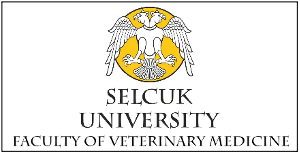| 2023, Cilt 39, Sayı 4, Sayfa(lar) 156-163 |
| [ Türkçe Özet ] [ PDF ] [ Benzer Makaleler ] |
| Evaluation of the Performance of Diagnostic Methods of Canine Parvovirus-2 and Canine Enteric Coronavirus Infections under Different Storage Conditions and Determination of Molecular Characterization |
| Irmak Dik1, H. Pelin Aslim1, Oya Bulut1, 2 |
| 1Selcuk University, Veterinary Faculty, Department of Virology, Konya, Türkiye 2Department of Microbiology, Faculty of Medicine, University of Dokuz Eylul, Izmir, Türkiye |
| Keywords: CPV, CCoV, phylogenetic analysis, method comparison |
| Downloaded:222 - Viewed: 764 |
|
Aim: This research was carried out to detect CPV and CCoV infections in
dogs in comparison with rapid kit and PCR and to determine the molecular
characterization of these infections in Konya region. Besides, it was aimed
to determine the sensitivity and specificity rates of the diagnostic tests after
fresh or freeze-thawed stool for infection diagnosis.
Materials and Methods: Faecal samples were collected from 50 unvaccinated, 0-12 months old dogs with diarrhoea symptoms at the shelter. The samples were analysed for CPV and CCoV by rapid test and PCR test. After freezethawing, the samples were checked again with the same tests. Results: CPV was positively diagnosed by rapid test and PCR in 2 and 29 fresh stool samples, respectively, and CCoV in 14 and 28 samples. CPV positive samples did not change while CCoV was diagnosed as positive in 10 samples and 28 samples by rapid test and PCR, respectively, after the freeze-thaw procedure. Although there were no differences in the diagnosis of CPV, the sensitivity of the rapid test in the diagnosis of CCoV decreased after the freezethaw procedure. In addition, only CPV-2b type was detected in CPV positive samples and both GI and GII subtypes were detected in CCoV positive samples as molecular. In conclusion, it was observed that rapid tests are not sensitive for accurate diagnosis of CPV and CCoV infections. Conclusion: The importance of choosing molecular diagnostic methods and using fresh samples for accurate diagnosis of virological infections can be emphasized. |
| [ Türkçe Özet ] [ PDF ] [ Benzer Makaleler ] |




